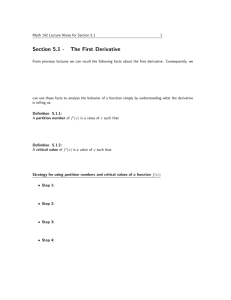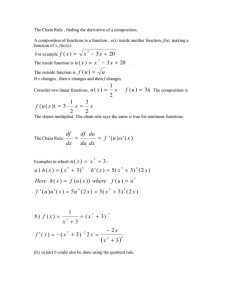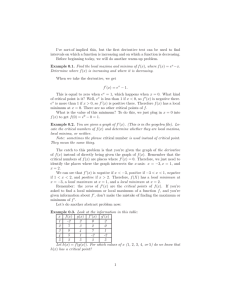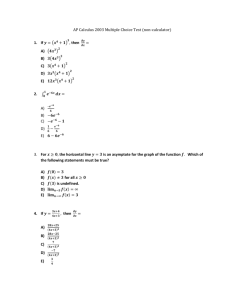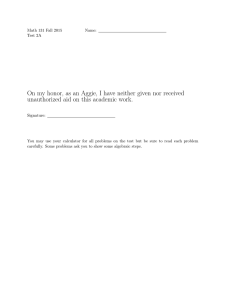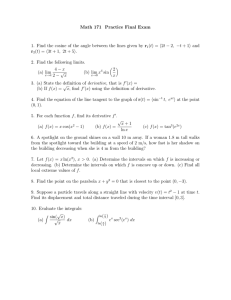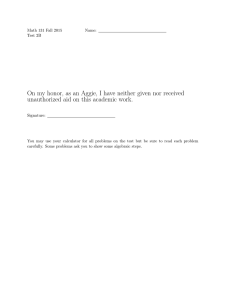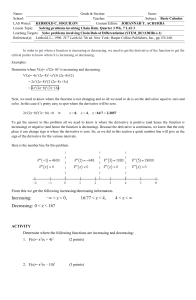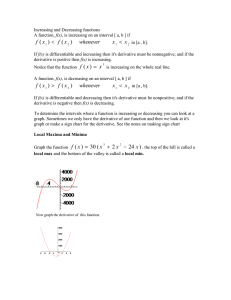Quiz #19
advertisement
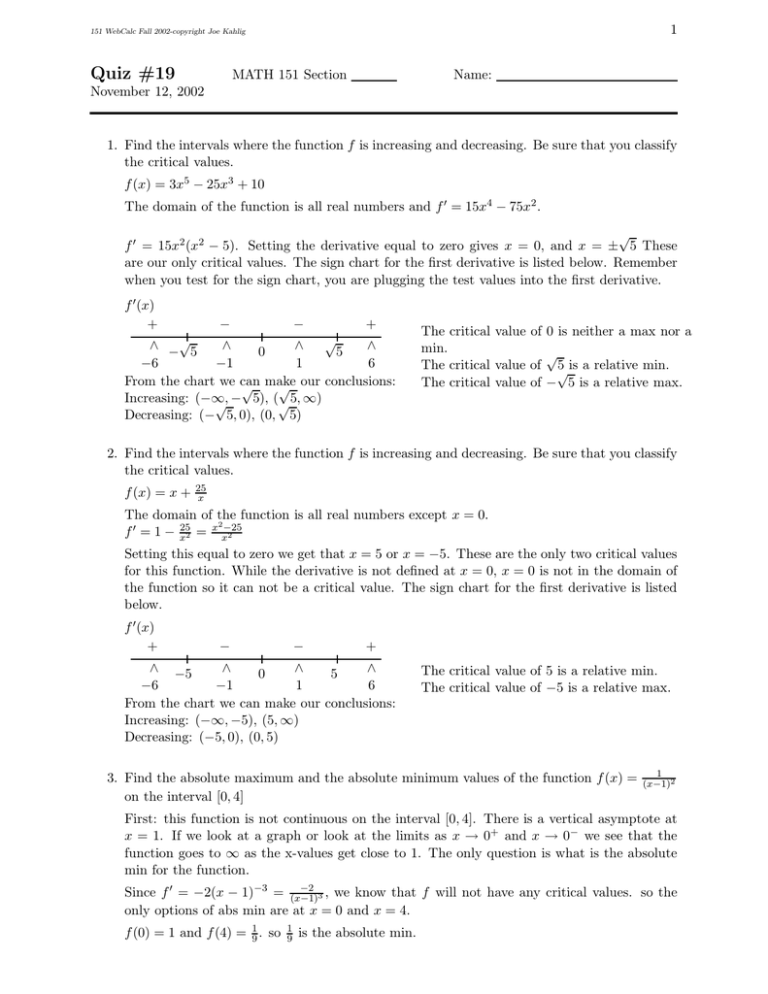
1 151 WebCalc Fall 2002-copyright Joe Kahlig Quiz #19 MATH 151 Section Name: November 12, 2002 1. Find the intervals where the function f is increasing and decreasing. Be sure that you classify the critical values. f (x) = 3x5 − 25x3 + 10 The domain of the function is all real numbers and f 0 = 15x4 − 75x2 . √ f 0 = 15x2 (x2 − 5). Setting the derivative equal to zero gives x = 0, and x = ± 5 These are our only critical values. The sign chart for the first derivative is listed below. Remember when you test for the sign chart, you are plugging the test values into the first derivative. f 0 (x) + − − + √ √ ∧ − 5 ∧ ∧ ∧ 0 5 −6 −1 1 6 From the chart we can make our conclusions: √ √ Increasing: (−∞, − 5), ( √ √ 5, ∞) Decreasing: (− 5, 0), (0, 5) The critical value of 0 is neither a max nor a min. √ 5 is a relative min. The critical value of √ The critical value of − 5 is a relative max. 2. Find the intervals where the function f is increasing and decreasing. Be sure that you classify the critical values. f (x) = x + 25 x The domain of the function is all real numbers except x = 0. 2 f 0 = 1 − x252 = x x−25 2 Setting this equal to zero we get that x = 5 or x = −5. These are the only two critical values for this function. While the derivative is not defined at x = 0, x = 0 is not in the domain of the function so it can not be a critical value. The sign chart for the first derivative is listed below. f 0 (x) + − − + ∧ −5 ∧ ∧ ∧ 0 5 −6 −1 1 6 From the chart we can make our conclusions: Increasing: (−∞, −5), (5, ∞) Decreasing: (−5, 0), (0, 5) The critical value of 5 is a relative min. The critical value of −5 is a relative max. 3. Find the absolute maximum and the absolute minimum values of the function f (x) = on the interval [0, 4] 1 (x−1)2 First: this function is not continuous on the interval [0, 4]. There is a vertical asymptote at x = 1. If we look at a graph or look at the limits as x → 0+ and x → 0− we see that the function goes to ∞ as the x-values get close to 1. The only question is what is the absolute min for the function. −2 Since f 0 = −2(x − 1)−3 = (x−1) 3 , we know that f will not have any critical values. so the only options of abs min are at x = 0 and x = 4. f (0) = 1 and f (4) = 19 . so 1 9 is the absolute min.


